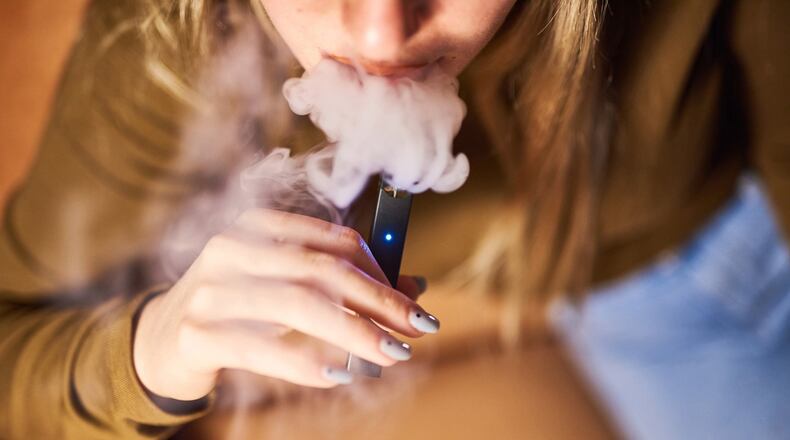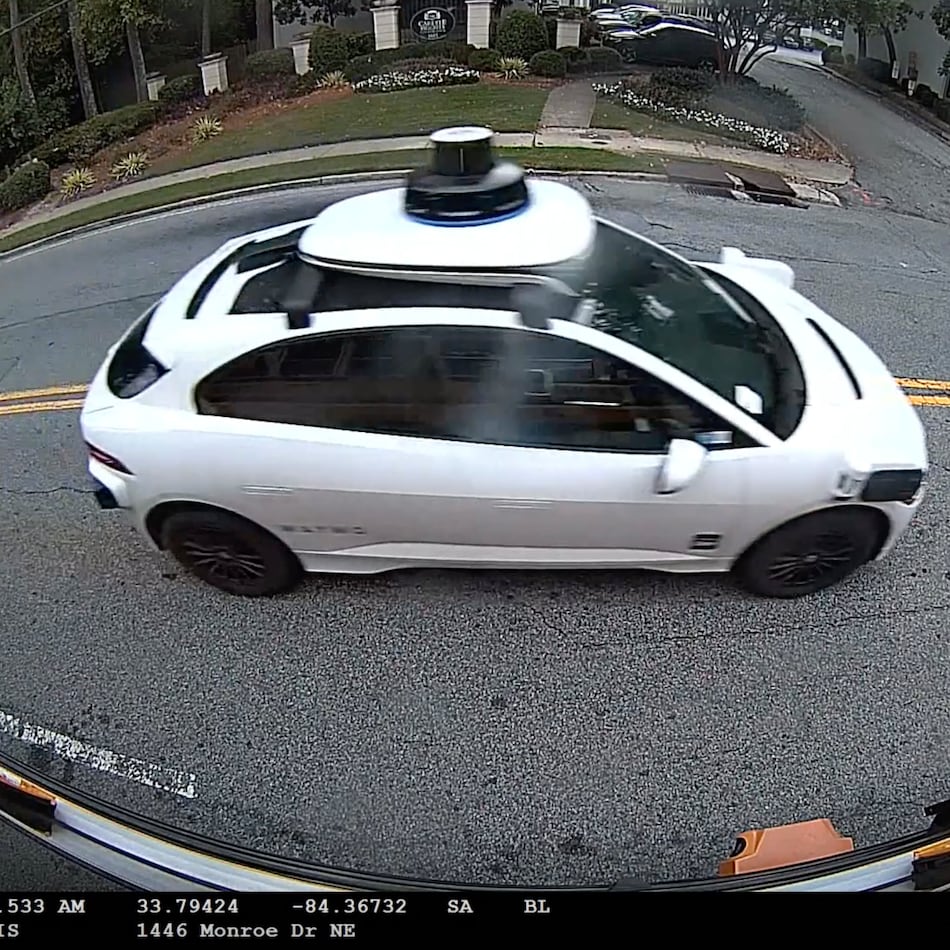A new survey says that while teens are aware of the risks of vaping, it has become a common part of the youth landscape of America.
The poll by Common Sense and SurveyMonkey reflects the rapid spread of vaping among teens and the powerful reach of social media in exposing kids to the risky trend.
The results also underscore the challenges to school in preventing vaping. A third of the teens in the survey say they see classmates vaping in school a few times a week or more. More than half say they see vaping at school at least monthly.
Battery--powered smoking devices, vaping pens have cartridges filled with a liquid that usually contains nicotine, flavorings, and chemicals. The liquid is heated into a vapor, hence the term “vaping.”
Originally marketed to help people quit smoking, vaping has caught on with teens, in part because of the kid-friendly flavors such as bubble gum, youth-oriented advertising and easy-to-conceal design. The e-cigarette JUUL, for example, resembles a USB flash drive. Other devices look like regular pens, so they blend easily in a school backpack.
Most metro districts have declared war on vaping; DeKalb has an information campaign that features student-collaborated anti-vaping videos and ads.
Among the findings of the new poll:
-Nearly eight in 10 teens say vaping is popular among their peers and is a part of their daily experience, in real life, in schools, and on social media.
-Nearly a quarter (23%) first heard about vaping on social media as it infiltrated their feeds.
-A majority of teens (59%), especially those on Instagram and Snapchat, say they are likely to see a social media post that mentions or shows vaping.
"As these results show, vaping is everywhere kids are, whether it is online, at home, or at school, and now, because of the woeful lack of regulatory oversight by the U.S. Food and Drug Administration, it has become a national health epidemic," said James P. Steyer, CEO and founder of Common Sense. "While we certainly need tough government action to protect kids from Big Tobacco, we need more than that. Parents, educators, media, and public officials at all levels of government need to work together to raise awareness and protect kids from mysterious vaping illnesses and the scourge of nicotine addiction."
Here is the official release:
There is some good news in the survey. Likely as a result of the recent spike in media coverage on the dangers of vaping, most teens understand vaping is as harmful as smoking cigarettes, despite tobacco industry claims that vaping is healthier. More often than not, the messages teens are now seeing online are against vaping rather than promoting or glorifying it. More than twice as many teens say they've learned about "risks or harms associated with vaping" as those who say they've heard that "vaping is healthier than smoking cigarettes" (72% vs. 34%).
“Understanding teenagers’ opinions on issues that are critical to their health can help us anticipate—and in some cases avoid—health crises in the future,” said Jon Cohen, chief research officer at SurveyMonkey. “In our study, 43% of teens who say vaping is less harmful than smoking have seen messages online to that effect, highlighting the key role social media and online advertising play in shaping public attitudes among young people. If we want teens to make healthful choices based on the latest information, engaging media and social media companies as part of the solution is a logical first step.”
Selected key findings:
Vaping is popular among teens, and it's happening regularly at school. One-third of teens (33%) say they see classmates vaping in school a few times a week or daily. More than half (54%) say they see it monthly. Nearly eight in 10 (78%) say vaping is popular among people their age where they live.
Most teens think vaping is as harmful as smoking. Just over half of teens (52%) say vaping is "about as harmful as smoking," while 31% say it's more harmful and 17% say it's less harmful. Among those teens who say vaping is less harmful than smoking, 43% say they've gotten messages online telling them that "vaping is healthier than smoking cigarettes."
One in four teens first learned about vaping on social media. A plurality of teens (44%) say they first learned or heard about vaping from someone they know, while 23% first heard about it on social media, 9% from TV or a movie, and less than that from outdoor ads, in a store, on a website, on the radio, or on a podcast.
Vaping is common in teens' social media experiences. When thinking about their typical experience using social media, 59% of teens say they're likely to see a post that mentions or shows vaping.
Instagram and Snapchat users are most likely to see vaping content. About three-quarters of Instagram (76%) and Snapchat (73%) teen users report seeing posts that include vaping on each of those respective platforms. Slightly fewer—64%—who visit YouTube say they've seen vaping content on the site.
Most of the vaping-related content online is advertising. Most of the vaping-related content that teens are seeing, according to them, is advertisements (61%) rather than content shared by a friend (40%) or shared by celebrities, personalities, or influencers (25%).
More often than not, the messages teens are seeing online are against vaping rather than promoting or glorifying it. More than twice as many teens say they've learned about "risks or harms associated with vaping" as say they've heard that "vaping is healthier than smoking cigarettes" (72% vs. 34%). Similarly, more than twice as many teens say they've seen content related to "how to stop vaping" vs. "how to use vaping devices" (38% vs. 15%).
More teens now use TikTok than Facebook, and more than half of teens on TikTok see vaping-related posts. More than four in 10 teens have used TikTok in the last year, compared with 39% who've used Facebook in the same time period. More than half of teens (56%) on TikTok say they've seen posts that include vaping on the platform, compared with 40% of teens who use Facebook.
This poll comes on the heels of the launch of the public education and advocacy campaign by Common Sense on the dangers of Big Tobacco and e-cigarettes. Most recently, Common Sense called on media leaders to refuse advertising by Juul and e-cigarette companies and urged the U.S. Food and Drug Administration to ban flavored cigarettes. As part of its work with educators across the country, Common Sense created a lesson plan for teachers called "How to Use the Vaping and Juuling Trend to Teach Media Literacy" to help teens better understand persuasive tricks and deeper meanings of advertisements and commercials.
About the Author
The Latest
Featured



